Day 74, New (to me) Equatorial Platform for a Telescope
Today's installment of garage gems is telescope related. I was at the Chabot Telescope Maker's Workshop last night (I am a volunteer who helps people learn how to make their own telescopes) and a previous participant, Stewart Rowley, showed up with something that I ended up taking home with me.
(Hope I spelled your name properly Stewart.)
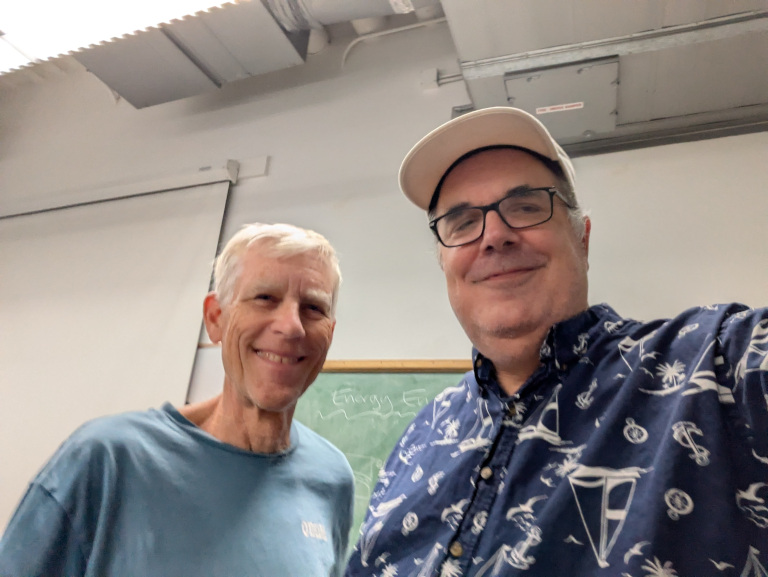
He explained that he and his son had built an equatorial platform for a Dobsonian telescope he had made at the workshop, but that they had never progressed to the point of motorizing it. He decided that it was taking up space, and said that he'd like to donate it back to the workshop. And, since I was there, I quickly intercepted it.
I suspect that the majority of readers out there (fully two of the three regulars I'm sure I have) are wondering what an equatorial platform is. It is short table on which you can place another telescope mount (often a simple Dobsonian or even a fixed tripod) and it will carry the entire telescope and move it in such a way as to track the motion of the stars. They are cool because they are often used to retrofit altazimuth telescope like a Dobsonian to do tracking, which makes it easier to do higher magnification viewing (like planetary viewing, or even video astronomy) and even astrophotography.
Here is the platform that Stewart brought in, sitting on an Ikea Lack table for scale. It was constructed for Stewart's 8" telescope.
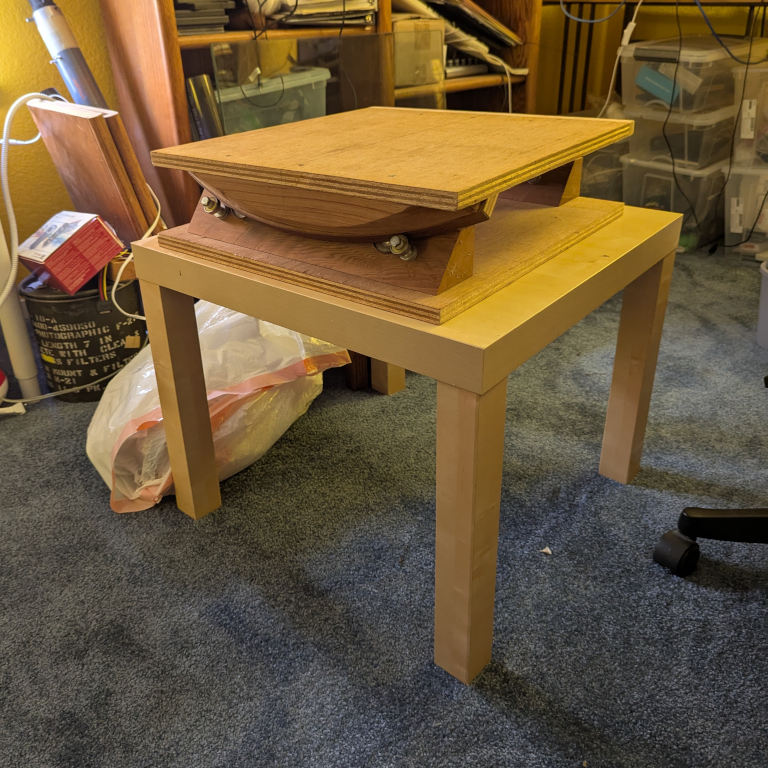
Here I put "Basic Blue" which is the first Dobsonian telescope I completed about 30 years ago. It is pretty much the definition of a basic Dobsonian (plywood construction, cardboard tube, and painted blue.) The rocker box is perhaps a bit taller than most (as I am a bit taller than most). It fits pretty well. But the center of gravity is a bit high, which means that the telescope isn't super stable on top. I could add some weight to the bottom of the rocker box to shift it down a bit to balance it. I suspect that Stewart's scope was a bit shorter than mine, which would move the center of gravity closer to the ground. Were I to design one of my own, I'd probably measure the center of gravity and design the cylindrical bearings better match the center of balance. This would make the cylindrical bearings larger. It's common for those bearings to actually be split into two pieces to help keep the height of the platform low. Most of the time, you design the platforms for about an hour of tracking. Over the course of that hour, the platform will tip by 15 degrees. You can design them for longer, but increasingly large degrees of tilt will make the scope tippier.
Without the loading of the telescope on the platform, it slides very easily and settles into the horizontal
condition. If you push the platform to one side or the other, it rolls back to the center quite smoothly. This
is because without any weight, the center of gravity is below the bearings. When I place my telescope on it,
the reverse is true. The telescope balances quite nicely when the platform is in its middle position, but when
it begins to tilt one way or the other, the high center of gravity causes it to accelerate in that direction, making it
tip. I'll have to do some modifications (probably by simply adding more weight to the rocker box) to get it to
work as intended.
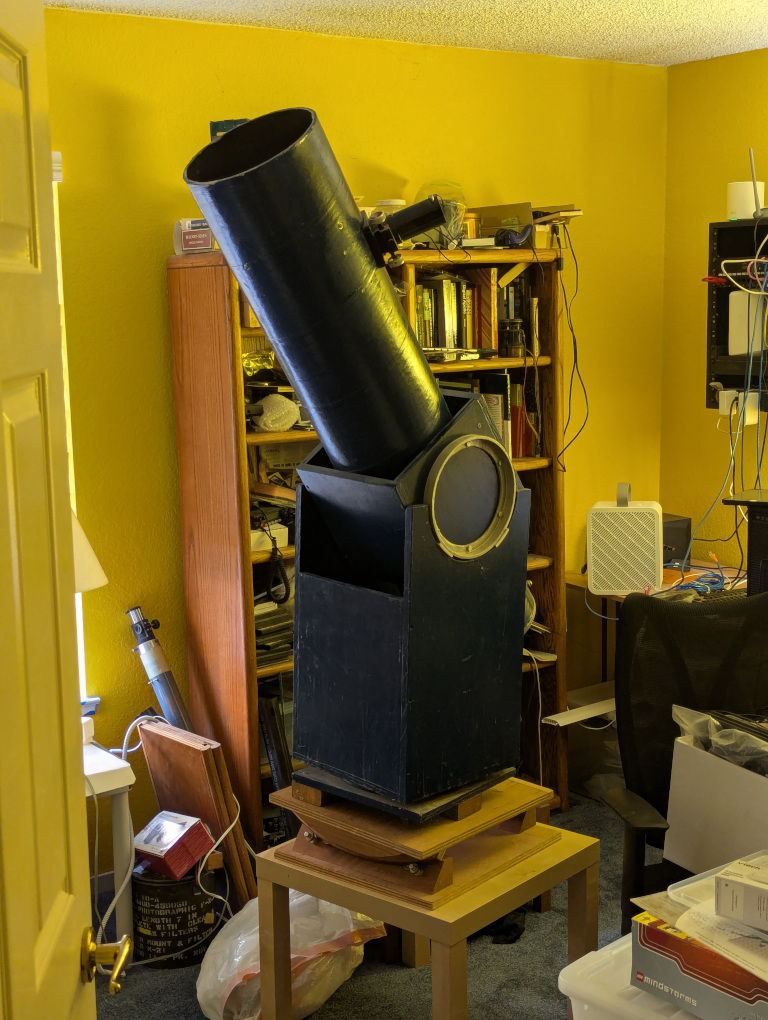
It's very cool to have a physical device to work with, as it makes certain design elements more obvious and intuitive.
Here is the base with the top platform removed. It's not held by any fasteners or anything. Gravity holds the
platform in position, and it is kinematically constrained so that it can only move in the desired rotation.
The rim of two cylindrical bearings rides on the two front and two rear roller bearings, and the entire platform
is kept from sliding in the north/south direction by the omndirectional roller bearings. The bearing surface is
cut to the co-latitude (ninety degrees minus the desired latitude) of the desired observing location. Yes, that means
that you won't be taking this mount with you to the Bahamas, but this is not often a huge problem.
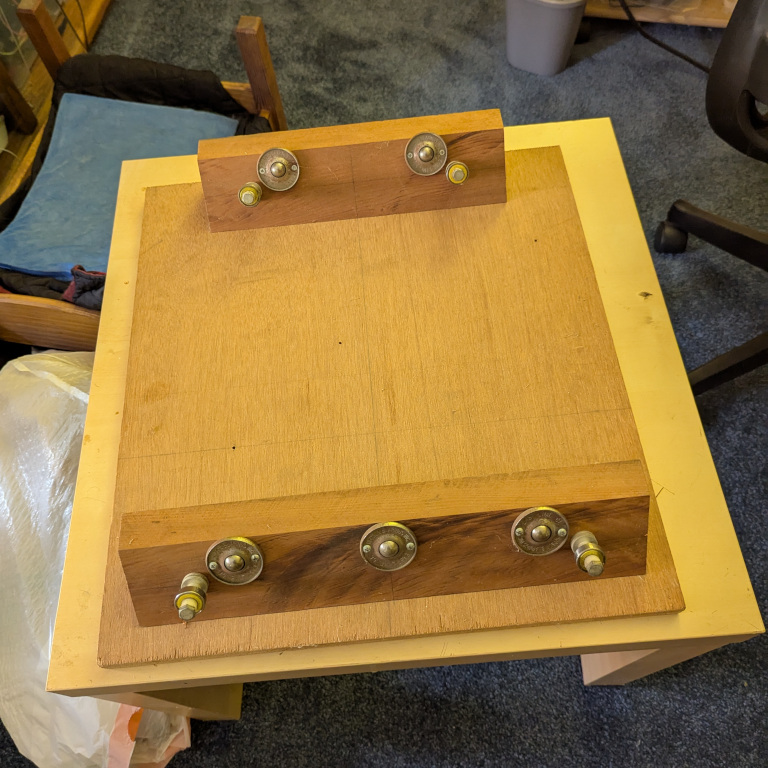
Here is a close up of one of the front roller bearings.
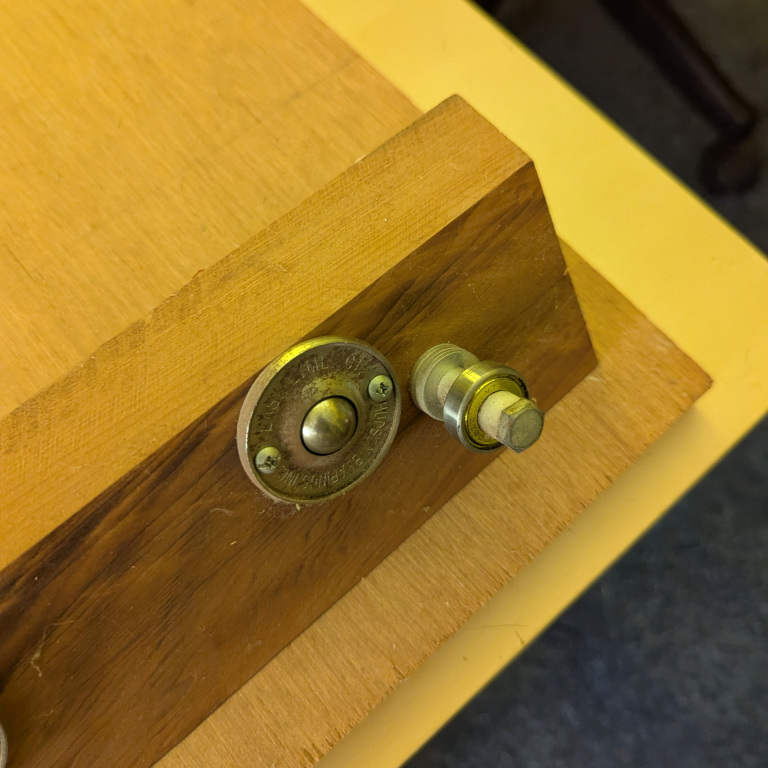
And here is the underside of the platform surface. You can see that it has two arcs of wood, cut at a bevel to match the angle of the base. The white surface is formica, and rides against the rollers, whereas the rim of the arc is covered in a hardwood that is sanded smooth and rides against the conventional bearings.
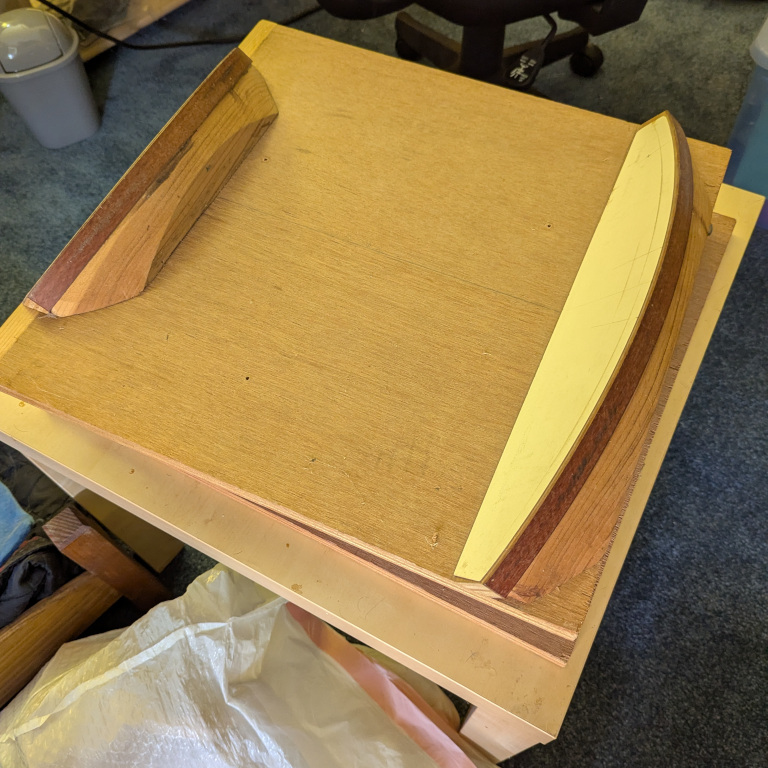
Now that I have the physical artifact in front of me, I think it is easier for me to think about how to design an appropriate motor/stepper controller for it, as well as to serve as inspiration for improvements. As I work toward starting on my aborted 12.5" f/5 scope, the possibility of adding an equatorial platform for that as well seems more enticing. Many thanks to Stewart for the gift.
Have a good weekend all.